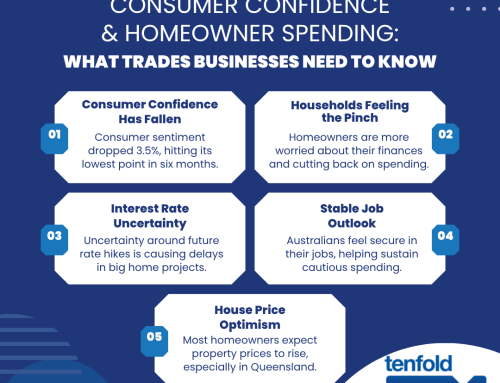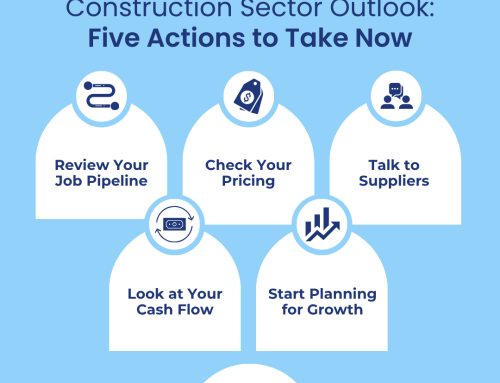Builder’s Guide to Strategic Growth: Capitalising on Infill and KDRB Demand
Demand is Shifting Inward
The residential construction landscape in Australia is shifting inward. As greenfield land releases become scarce and property owners seek modern, customised homes in their existing suburbs, demand for knock-down rebuilds (KDRBs) and infill development is rising. Builders who position themselves strategically in this market can secure high-value work while optimising long-term growth.
In recent years, the landscape of residential housing has witnessed significant shifts, particularly in how prospective buyers approach their housing needs. Traditional detached home construction, once the cornerstone of growth in greenfield estates, has thrived on the fringes of expanding urban areas. However, with guidance from a construction business coach, evolving market conditions and changing lifestyle preferences are transforming buyer behaviour in noteworthy ways.
In today’s evolving housing landscape, many homeowners are opting to reinvest in their current suburbs rather than move to expanding outer growth areas. This trend reflects a more substantial cultural shift towards valuing established communities, which offer a blend of lifestyle advantages and solid infrastructure. As metropolitan areas experience increased density, the charm of established neighbourhoods marked by their distinct character, diverse amenities, and easy access to essential services becomes increasingly attractive. For construction companies, recognising and adapting to these emerging trends is crucial. This article will delve deeper into these developments, analysing their implications for the housing market and highlighting potential opportunities for strategic growth in both suburban and urban settings.
KDRBs Require a Different Playbook
Building on infill sites is not solely reliant on construction expertise; it necessitates well-structured processes and strategic thinking tailored to the unique challenges that these projects present. Unlike greenfield projects, which typically involve open land and fewer restrictions, infill development presents a variety of site-specific hurdles. These include limited access for construction machinery, the need for meticulous planning due to the proximity of neighbouring properties, and the requirement for staged approvals from local councils and regulatory bodies that can complicate the timeline. Furthermore, engaging clients throughout the process is pivotal to ensure that their visions and expectations are met.
Smart builders in Australia, especially those who focus on knocking down and rebuilding homes, understand the challenges involved and work hard to set up solid systems to handle them well. Having a good plan for infill development is really important; it means making workflows easier, improving communication, and sorting out logistics on site. This way, builders can keep their teams organised and make sure each project runs smoothly. Additionally, working with a business coach in construction can offer valuable help and advice, helping builders sharpen their strategies and boost their overall performance. This teamwork not only leads to better project results but also helps build a good reputation for the construction business in the community.
Quoting Must Reflect Complexity
Quoting for infill development and knock down rebuild builders must adequately reflect the added layers of complexity that these types of projects entail. Factors that must be considered include access restrictions, the need for site preparation, design constraints, and the heightened involvement of clients during the process. Each of these elements plays a significant role in contributing to increased costs that must be accurately reflected in the pricing strategy of the project.
Builders who do not take these variables into account risk underquoting their projects, which can lead to tighter profit margins and increased administrative strain. It is essential for construction business coaches to guide builders in understanding that pricing must encompass not only the direct expenses of construction but also the potential risks associated with the project, regulatory hurdles that may arise, and the additional time that will be necessary for obtaining approvals and ensuring effective coordination throughout the project. Implementing a solid infill development builder strategy becomes crucial in mitigating these risks and ensuring the project’s overall success.
Marketing Infill Expertise
To attract clients in the knock down rebuild (KDRB) space, a focused and targeted marketing strategy is essential. Homeowners considering a knock down rebuild are not typically searching for simply vacant land; instead, they are actively looking for a skilled knock down rebuild builder who possesses a comprehensive understanding of the unique challenges associated with replacing an existing home. These homeowners desire a modern design that harmonises with their specific location, enhancing both aesthetics and functionality.
For builders in this competitive market, it is imperative to strengthen their position by effectively showcasing their expertise. One effective method is through the use of detailed case studies that illustrate their past successes. Additionally, testimonials from satisfied clients serve as powerful endorsements, and leveraging social proof can significantly enhance their reputation within the community.
By demonstrating a strong track record of successful KDRB projects, builders can reinforce their credibility and build trust with prospective clients, setting themselves apart in a crowded marketplace. Engaging with a construction business coach may also provide valuable insights and strategies tailored specifically for the KDRB market, further elevating the builder’s approach to attracting clients. Moreover, implementing an effective infill development builder strategy can maximise opportunities in urban settings, creating additional pathways for business growth and client acquisition.
Local Planning Knowledge is a Superpower
One of the most significant advantages that a builder can offer in the context of infill development in Australia is a comprehensive understanding of local planning regulations. Effectively navigating council approvals can often mean the difference between a project that flows smoothly and one that experiences costly delays.
Clients value builders, particularly those focused on knock down rebuild projects, who are well-versed in zoning laws, site constraints, and various development approval pathways. Builders who can proactively address these considerations are better positioned to streamline their projects.
This understanding not only aids in expediting the process but also enhances the builders’ standing as reputable industry leaders. For those operating within the construction business, a strategic approach that incorporates an infill development builder strategy can lead to significant benefits. Being informed and prepared helps to build trust with clients, thereby fostering long-term relationships and opportunities for future projects.
Ultimately, builders who possess this depth of knowledge can differentiate themselves in a competitive market and contribute to the overall success of their construction business.
Get Strategic or Get Stuck
Builders who embrace the numerous opportunities that come with infill development and the strategies employed by knock down rebuild builders can elevate their construction business to unprecedented heights. However, achieving success in this dynamic market requires more than just technical expertise; it demands a well-thought-out strategic positioning, refined operational systems, and an unwavering commitment to delivering exceptional service to clients.
By developing tailored business systems specifically designed for the construction sector, refining pricing strategies, and leveraging their expertise in local planning, builders can establish themselves as trusted professionals in the high-value infill construction market. Additionally, employing a robust infill development builder strategy will set builders apart from the competition, ensuring they remain relevant and competitive.
Those who fail to adapt their practices risk being left behind as the marketplace continues to evolve at a rapid pace. Therefore, if you are looking to take your business to the next level, do not hesitate to contact us today. As your construction business coach, we are here to help you navigate these changes and achieve sustained success in your construction ventures.






